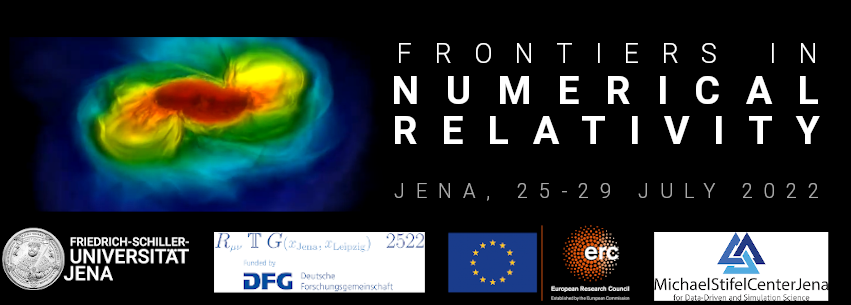Speaker
Description
The Einstein and Maxwell equations are both systems of hyperbolic equations which need to satisfy a set of elliptic constraints throughout evolution. However, while electrodynamics and magnetohydrodynamics have benefited from a large number of evolution schemes that are able to enforce these constraints and are easily applicable to curvilinear coordinates, unstructured meshes, or N-body simulations, many of these techniques cannot be straightforwardly applied to existing formulations of the Einstein equations. We develop a 3+1 a formulation of the Einstein equations which shows a striking resemblance to the equations of relativistic MHD and to EM in material media. The fundamental variables of this formulation are the frame fields, their exterior derivatives, and the Nester-Witten and Sparling forms. These mirror the roles of the electromagnetic 4-potential, the electromagnetic field strengths, the field excitations and the electric current. The role of the lapse function and shift vector, corresponds exactly to that of the scalar electric potential. The formulation is manifestly first order and flux-conservative, which makes it suitable for high-resolution shock capturing schemes and finite-element methods. Being derived as a system of equations in exterior derivatives, it is directly applicable to any coordinate system and to unstructured meshes, and leads to a natural discretisation potentially suitable for the use of machine-precision constraint propagation techniques such as the Yee algorithm and constrained transport. Due to these properties, we expect this new formulation to be beneficial in simulations of many astrophysical systems, such as binary compact objects and core-collapse supernovae as well as cosmological simulations of the early universe.

